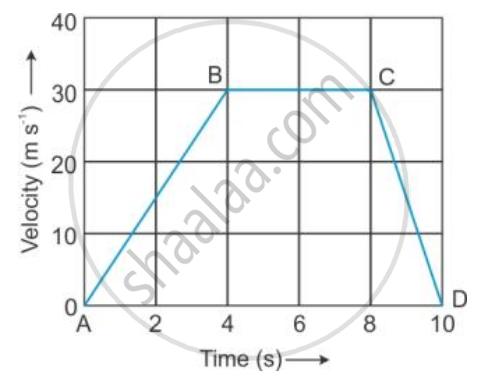Advertisements
Advertisements
Question
The velocity-time graph of a moving body is given below in Figure

Total displacement.
Solution
Total displacement = Displacement of part AB + Displacement of part BC + Displacement of part CD
= 60 + 120 + 30 = 210 m
APPEARS IN
RELATED QUESTIONS
During an experiment, a signal from a spaceship reached the ground station in five minutes. What was the distance of the spaceship from the ground station? The signal travels at the speed of light, that is, 3 × 108m s−1.
Fill in the following blank with suitable word:
The physical quantity which gives both, the speed and direction of motion of a body is called its……………
A tortoise moves a distance of 100 metres in 15 minutes. What is the average speed of tortoise in km/h ?
A motorcyclist starts from rest and reaches a speed of 6 m/s after travelling with uniform acceleration for 3 s. What is his acceleration ?
A car travels 100 km at a speed of 60 km/h and returns with a speed of 40 km/h. Calculate the average speed for the whole journey.
The graph given alongside shows how the speed of a car changes with time:

(i) What is the initial speed of the car ?
(ii) What is the maximum speed attained by the car ?
(iii) Which part of the graph shows zero acceleration ?
(iv) Which part of the graph shows varying retardation ?
(v) Find the distance travelled in first 8 hours.
Give an example of motion in which the average speed is not zero but the average velocity is zero.
Give one example of following motion :
Variable velocity
Express 15 m s-1 in km h-1.
A car accelerates at a rate of 5 m s-2. Find the increase in its velocity in 2 s.
